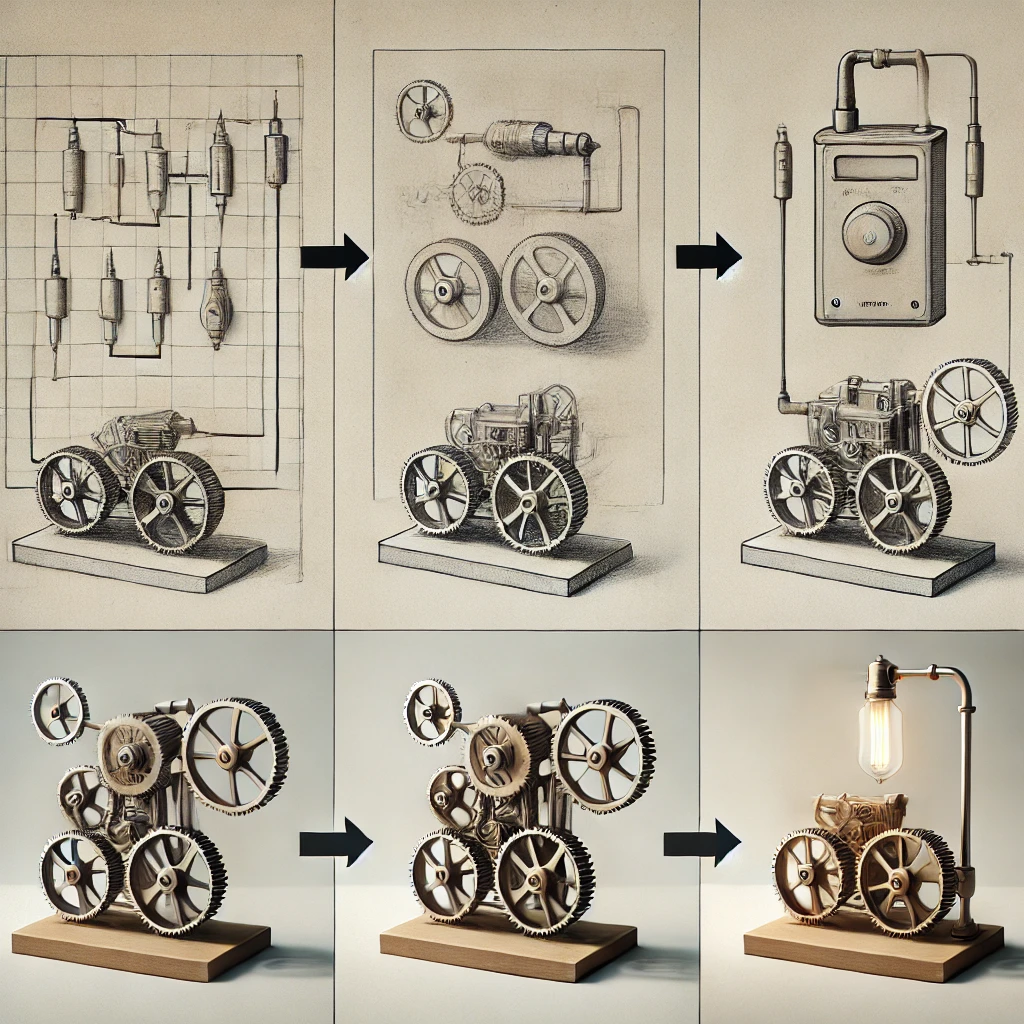From Concept to Patent: The Surprising Evolution of Your Invention
As a patent attorney who’s been in the game for more years than I care to count, I’ve seen countless inventions go from bright ideas to patented realities. But here’s something that might surprise you: rarely, if ever, have I witnessed an invention go through the entire patent process without its understanding being modified – and most often, narrowed.
Today, I’m going to walk you through the patent process and show you how your understanding of your own invention will evolve. Trust me, it’s a journey, and it’s one you need to be prepared for.
The Critical First Step: Defining Your Invention
Before we dive into the nitty-gritty of patent applications and office actions, let’s talk about the most crucial step: defining your invention. This isn’t just important; it’s absolutely essential.
What Are the Essential Features?
When you’re first fleshing out your invention, you might be tempted to include every bell and whistle you can think of. But here’s a pro tip: focus on the essentials. Ask yourself:
- 1. What features are critical to the operation of your invention?
- 2. Which elements are required to provide the solution to the problem your invention solves?
These are your essential features. Everything else? It’s just window dressing.
Pro tip: Don’t throw out the “window dressing”. Hold them aside as you may need to rely upon it later.
The Problem-Solution Approach
Here’s something I always tell my clients: frame your invention in terms of the problem it solves. This isn’t just helpful for you; it’s crucial when dealing with patent examiners later on. They love to see inventions that solve real-world problems in novel ways.
It will also be helpful to “sell” your invention once you have your patent.
The Pre-Filing Patent Search: Your First Reality Check
Alright, you’ve got your invention defined. You’re ready to file, right? Not so fast! Before you even think about filing, you need to conduct a patent search.
Why Bother with a Search?
I get it – you’re excited about your invention and want to get that application filed ASAP. But trust me, a thorough patent search can save you time, money, and heartache down the road. It’s your first chance to see how your invention stacks up against what’s already out there.
Adjusting Your Definition
Here’s where that evolution I mentioned earlier starts to kick in. As you dig through existing patents and publications, you might find that parts of your invention aren’t as unique as you thought. Don’t panic! This is normal and actually helpful. Use this information to adjust your invention’s definition. Focus on what makes your invention truly unique.
Drafting Your Patent Application: Putting Pen to Paper
Now we’re getting to the meat of it – drafting your patent application. This is where your evolved understanding of your invention really comes into play.
The Importance of Broad Claims
When drafting your claims – the legal definitions of your invention – start broad. Think of it like this: you’re staking out your territory. You want to claim as much ground as you can, while still distinguishing your invention from what’s already out there.
Describing Your Invention
In the description section of your application, be thorough. Remember those essential features we talked about earlier? Make sure they’re described in detail. But don’t stop there – describe alternative embodiments (including that “window dressing” mentioned earlier) too. You never know which version of your invention might end up being the most valuable.
The Examination Process: Where the Rubber Meets the Road
Alright, your application is filed. Time to sit back and wait for your patent to arrive, right? Not quite. The examination process is where things really get interesting – and where your understanding of your invention will continue to evolve.
Dealing with Rejections
Don’t be discouraged if your first office action is a rejection. It happens to the best of us. In fact, it happens in the vast majority of cases. Not to worry, it’s actually an opportunity. Each rejection is a chance to further refine your understanding of your invention and how it differs from the prior art.
Maintaining Focus on the Claims
As you respond to office actions, keep your focus laser-sharp on the language of your claims. This is where the legal protection for your invention comes from. Be prepared to amend your claims, but always with an eye towards maintaining the broadest possible protection for your invention’s core concept.
The Art of Communication with the Patent Examiner
Your communications with the patent examiner are crucial. This is your chance to really drive home what makes your invention unique and patentable.
Emphasize the Problem and Solution
Remember how we talked about framing your invention in terms of the problem it solves? This is where that really pays off. Make sure the examiner understands not just what your invention is, but why it matters.
Highlight the Distinctive Features
When responding to rejections, don’t just say “my invention is different.” Show how it’s different. Highlight those essential features we identified way back at the beginning, and explain why they’re not just different from the prior art, but non-obvious.
More importantly, make sure you explain how each of those distinctive features enables the solution to the problem that is being solved by your invention. This more than anything else, in my experience, leads to an Examiner “getting it” and changing from a skeptic who is reluctant to give you a patent to someone who becomes enthusiastic about your invention and is now wants to make sure you get a patent.
Embracing the Evolution
Throughout this whole process, from initial concept to (hopefully) granted patent, your understanding of your invention will evolve. Embrace this! It’s not a sign that your original idea was flawed; it’s a natural part of the process.
Continuous Evaluation
Keep evaluating the essentiality of each feature in your broadest claim. As you encounter prior art and receive feedback from the examiner, you might find that what you thought was essential isn’t, or that a feature you considered minor is actually key to your invention’s patentability.
Balancing Breadth and Patentability
There’s always a tension in patent law between wanting the broadest possible protection and needing to distinguish your invention from the prior art. Finding the right balance is an art, and it’s one that develops as your understanding of your invention evolves.
Conclusion: The Journey of Invention
As we wrap up, I want to emphasize again how normal and expected it is for your understanding of your invention to evolve throughout the patent process. This evolution isn’t a bug; it’s a feature. It’s how you end up with the strongest possible patent protection for your invention.
Remember:
- 1. Start by clearly defining your invention’s essential features.
- 2. Conduct a thorough patent search and be ready to adjust your definition.
- 3. Draft your application with a focus on solving a problem.
- 4. Stay flexible during the examination process.
- 5. Keep your focus on the claims and be ready to refine them.
- 6. Communicate clearly with the examiner about what makes your invention unique.
The patent process can be long and sometimes frustrating, but it’s also an incredible opportunity to really understand and refine your invention. Embrace the journey, and you’ll come out the other side not just with a patent, but with a deeper, richer understanding of your own creation.

